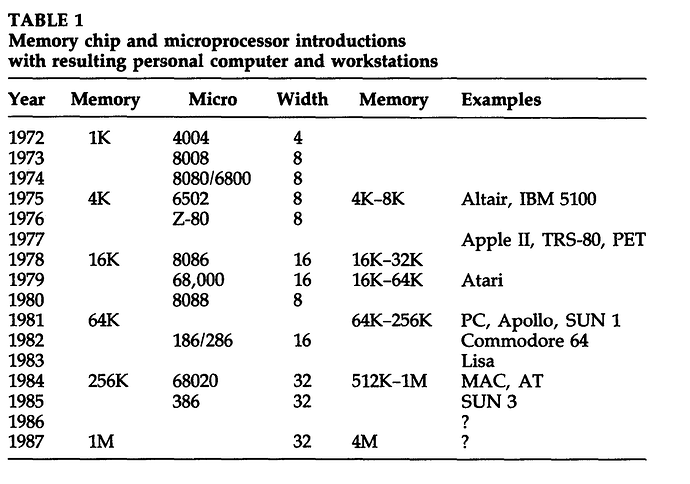A followup with more links and snippets, having recently posted
Gordon Bell’s retrospective of the PDP-11 (1977)
First…
Computing history: a personal and industry view (1984)
The first time that I invested in learning was in 1966. I went on leave from DEC to become a professor at Carnegie Tech to learn about computer science. Even though I had already helped develop the first minicomputer (the PDP-8) and the first commercial timesharing system (the PDP-6), industry was unconcerned about the “science” of computing.
Second…
A walk through The Computer Museum with Gordon Bell (1985) (approx 9 pages)
…I don’t believe anyone really invented the personal computer. “Invention” is too strong word for it. A lot of things are called inventions when, actually, they were inevitable.
…
When the 6600 was announced, I remember being just awestruck at it. I put it with Atlas as one of the greats. In the development ideas and projects at that time, these two stood out from everything else.
…
The PDP-11 was introduced in 1970, and later the VAX-11 was created to extend the range. There are still a lot of PDP-11s being sold, but VAX has really overtaken it as the main revenue source at DEC.
I personally made the decision in 1975 not work on the first personal computer. I could see it was going to be quite a machine. But I went to work on the VAX instead, which was a much more fascinating engineering problem.
…
DEC actually did put a number of PDP-8s in people’s homes. I had a time-sharing terminal in my home in 1966. Our children grew up programming on a terminal.
Third…
Toward a History of (Personal) Workstations (1986) (keynote, 45 pages)
The chart labeled Fig. 3 has just the one variable, memory price. The first thing about prediction is to be able to predict the past. This chart allowed me to predict the past; I was able to predict things back to the PDP-I, the LINC, the PDP-5; and the PDP-8. I observed that the only thing that really matters is memory price and that memory size is a single variable. Allen Newell and I played this game in the Computer Structure book, that is, if you only had one number to talk about a computer, what would you say about it? And I think it’s like any animal: How big is its brain size? This is … simply the brain size of the computer, from which you determine all the computer classes. If you want to explain computers in one graph, this is the basic graph. It stopped working as well as I wanted it to in 1980.
Fourth and finally…
Bell’s Law for the Birth and Death of Computer Classes: A theory of the Computer’s Evolution (2008)
the fourth generation bipolar, MOS and CMOS ICs enabling the microprocessor, (1971) represents a “break point” in the theory because it eliminated the other early, more slowly evolving technologies.
…
Building the smallest possible computer accounts for the creation of computers that were used by one person at a time and were forerunners of the workstation e.g. Bendix G-15 and LGP 30 in 1955… Digital Equipment’s PDP-1 (1961), followed by its more “minimal” PDP-5 & 8 established the minicomputer class
…
Generality ALWAYS Wins! A computers created for a particular, specialized function e.g. word processing, interpreting a language, used for a particular application is almost certain to be taken over by a faster evolving, general purpose computer
…
The MOS microprocessor introduced in 1971 ultimately overtook bipolar by 1990 to establish a single line based on CMOS technology.
…
Microprocessor transistor/chip evolution c1971-1985 establish: calculators, home computers, personal computers and workstations, and lower (than minicomputer) priced computers.
…
The PDP-8, introduced in 1965 at a price of $18K is the first “minicomputer.” It was minimal, designed as both the smallest computer that could be built and as a component to be used for controlling other devices… The PDP-8 had a dozen implementations following a minimal cost trajectory with single chip versions beginning in 1975 to both define and increase its marketability including its use as a dedicated word processor to the early 1980s.
…
Original VAX Planing model (diagram): Computer Prices versus time from 1975 showing different memory sizes and resulting prices 1964-1986. In 1998, the model was reviewed retrospectively. The price changes, though accurate, were so rapid as to be unbelievable and hardly actionable.
